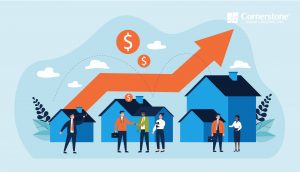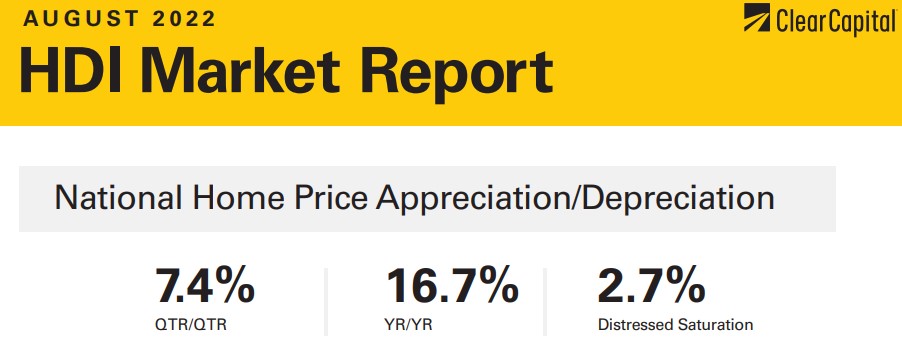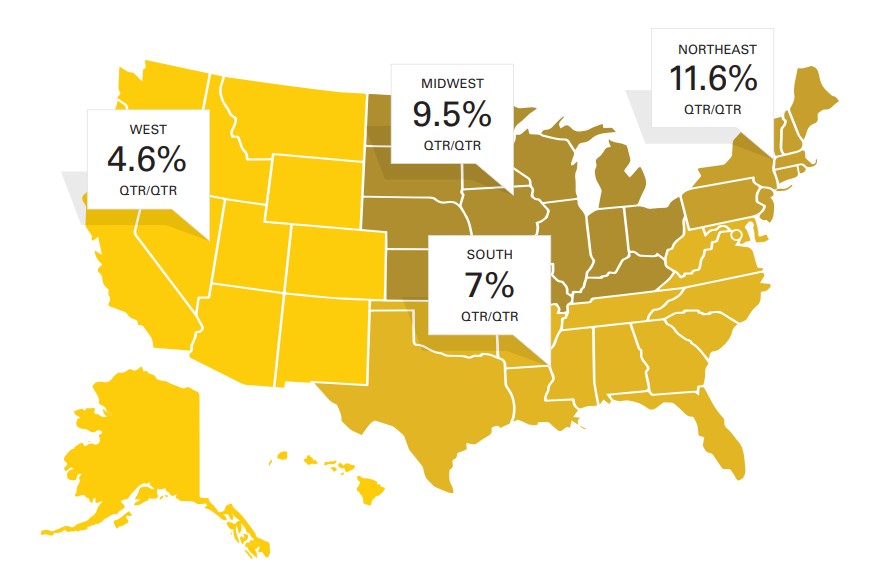 According to the latest Home Data Index Market Report from Clear Capital, home price appreciation cooled markedly in August as it’s proprietary Clear Capital Home Data Index for the second quarter of 2022 rose 7.4% over the previous quarter; on a yearly basis, this number is up 16.7%. This compares to a 11 % and 20%, respectively, in July.
According to the latest Home Data Index Market Report from Clear Capital, home price appreciation cooled markedly in August as it’s proprietary Clear Capital Home Data Index for the second quarter of 2022 rose 7.4% over the previous quarter; on a yearly basis, this number is up 16.7%. This compares to a 11 % and 20%, respectively, in July.
Of the four major geographic regions, all four reported home price appreciation, with Florida remaining the hottest market among the major metros.
The Northeast geographic region reported the fastest quarterly growth at a rate of 11.6% and also the fastest annual growth at 20.2%. According to Brent Nyitray of the Daily Tearsheet, the Northeast has been a national laggard since the real estate bubble burst in 2006, which has been at least partially driven by declining employment in the financial sector.
The Northeast was followed by the South which grew 19.4% last quarter. Most of the top 15 MSAs were in the South, with Tampa rising 30%, Raleigh and Nashville rising 27%, and Atlanta increasing 25%. The South has been a stalwart performer over the past several quarters.
Third was the West where prices grew 15.2% on a yearly basis, and the Midwest which saw a 10.8% increase in prices. and we saw quarterly decreases in Detroit, Cleveland, Chicago, and St. Louis.

“The term ‘housing recession’ has suddenly emerged as the new topic of conversation in the business press,” said Nyitray. “Almost every statistic, save for home price appreciation, has been trending negative for some time. Housing starts remain at about the same level they were 70 years ago, while home sales are declining at an alarming rate.”
“According to the National Association of Realtors, existing home sales fell 6% MoM and 20% YoY. New Home Sales are even worse—the latest data has new home sales down 13% MoM and 30% YoY. The S&P 500 Homebuilder ETF (XHB) has underperformed the S&P 500 by 12% year-to-date.”
“The consensus is becoming bearish on house prices given the rapid increase in home prices and mortgage rates. And in some hot MSAs, it wouldn’t be unreasonable to see a decrease after years of torrid growth,” Nyitray continued. “Could we see another crisis like we had in the mid-00s? Institutional money is beginning to put a pause on purchases.”

“The chances of another nationwide decline seem pretty remote, unless we have a major economic shock accompanies by much higher interest rates,” Nyitray concluded. “While mortgage rates are high compared to the past few years, the overall mortgage rate is still quite low on a historical basis. Older Americans might remember paying 18% on a mortgage in the early 1980s. Plus, any sort of economic shock would almost certainly end the Fed’s tightening cycle, which takes rising mortgage rates out of the picture.
Click here to see the report in its entirety, including breakdowns for the top metropolitan areas.

 DSNews The homepage of the servicing industry
DSNews The homepage of the servicing industry









